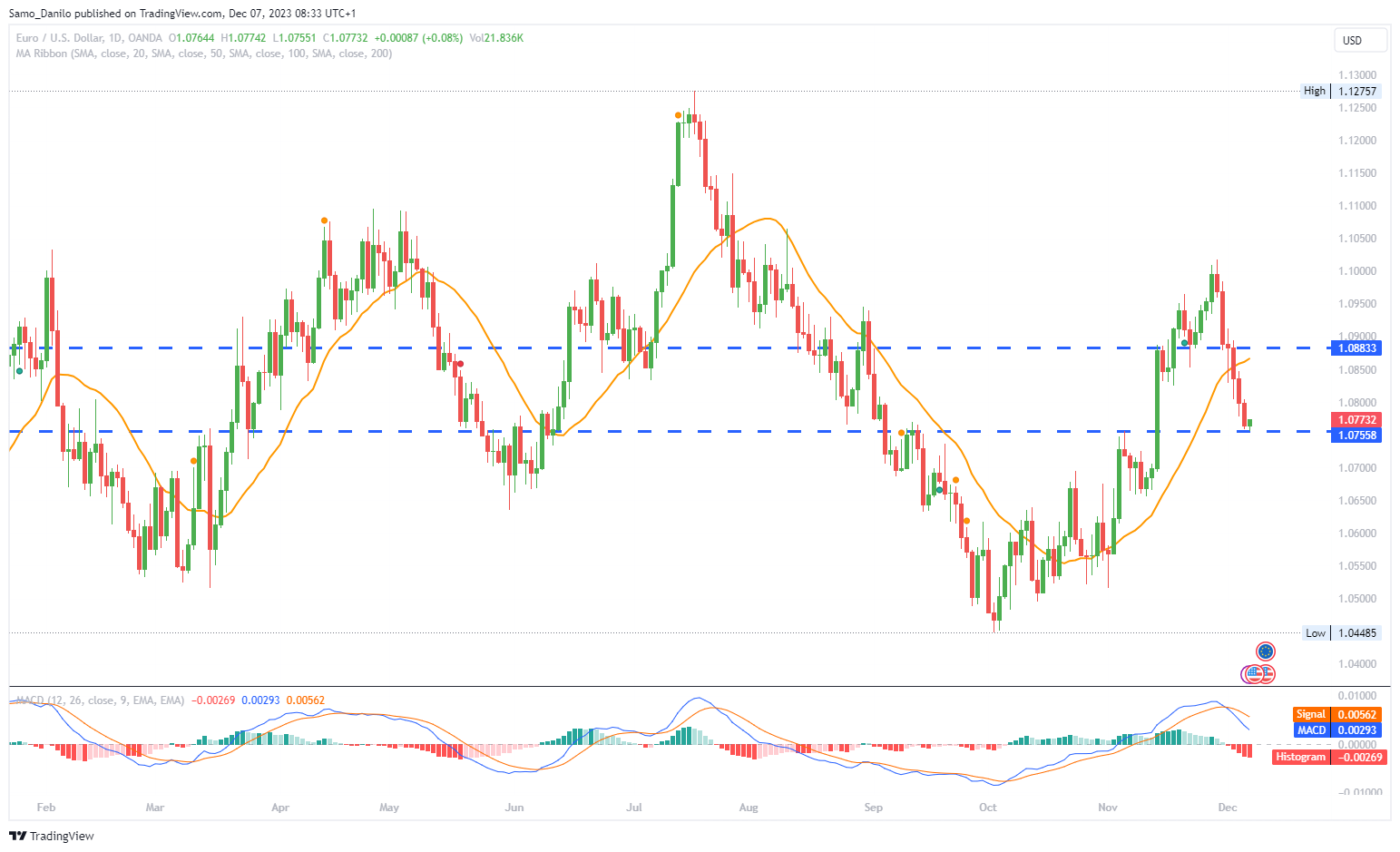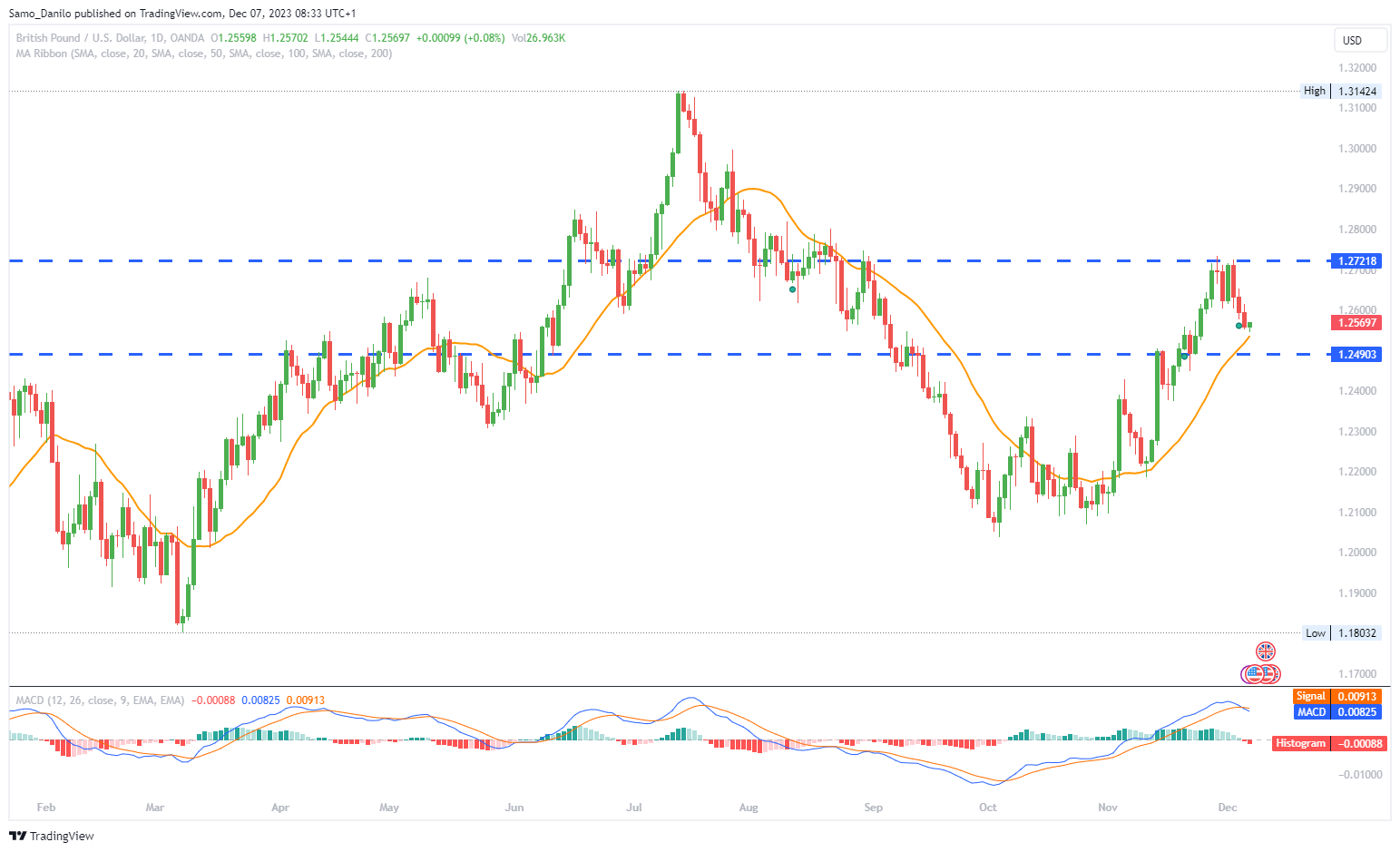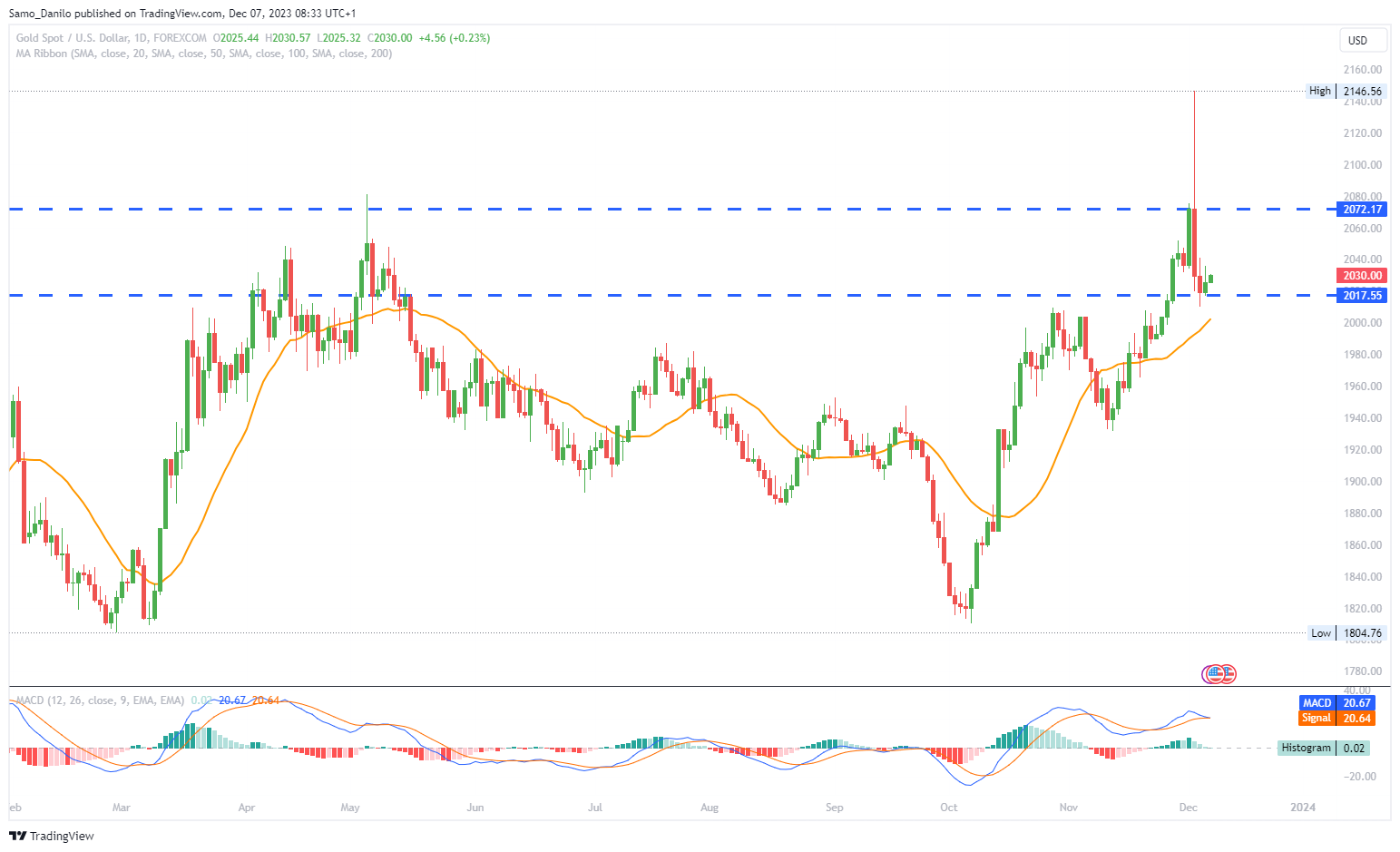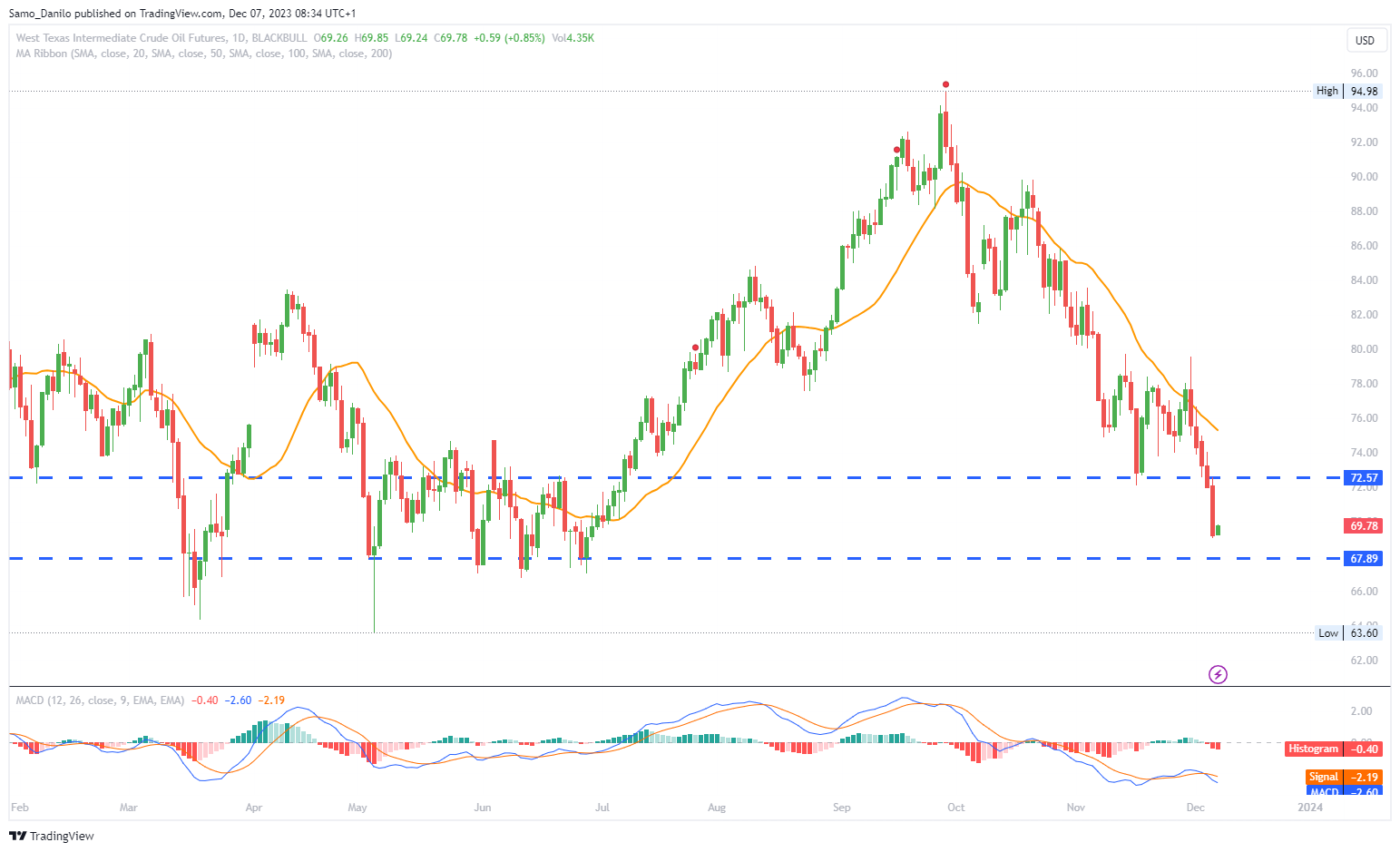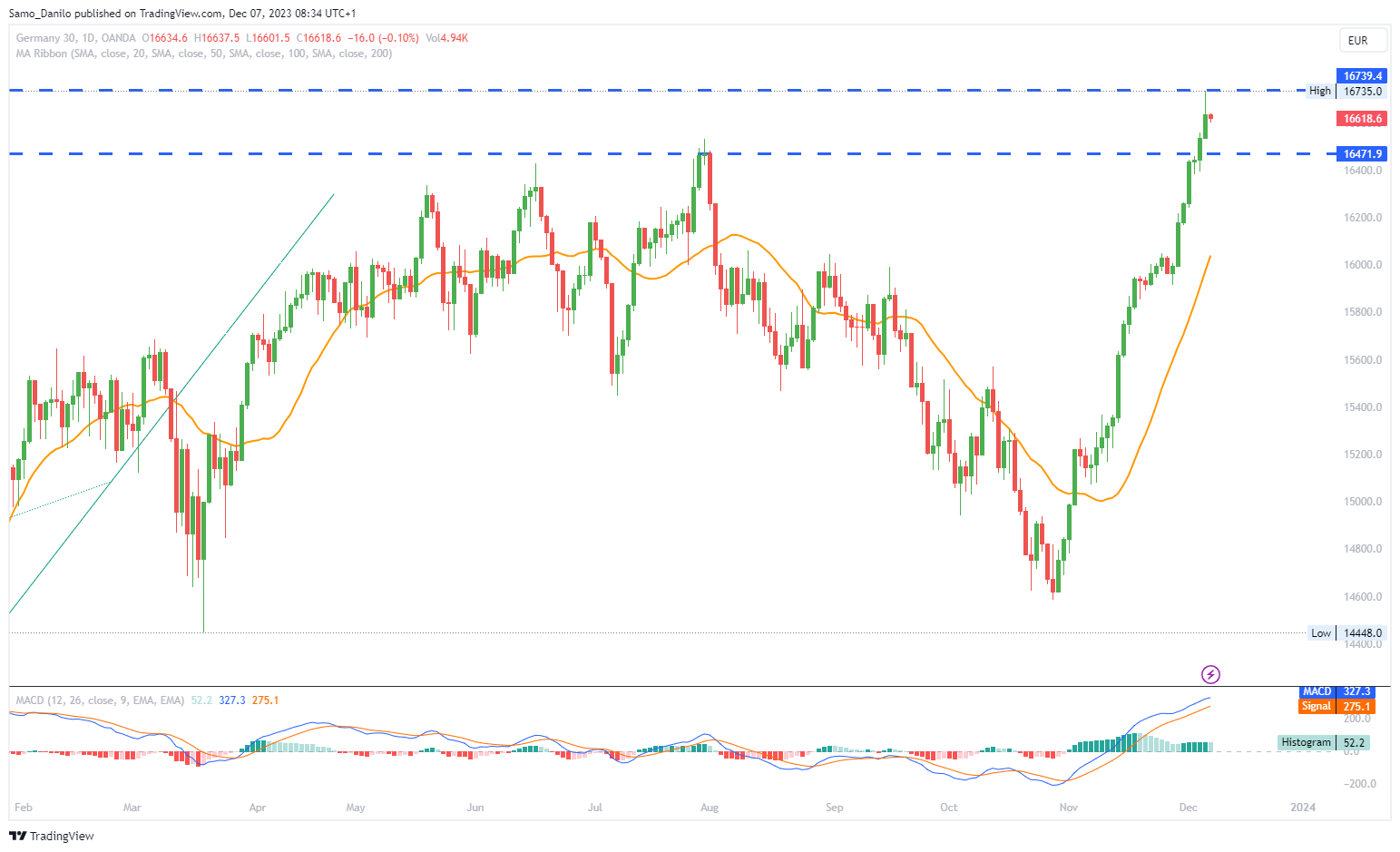EURUSD
- The EUR/USD extended its decline for the sixth consecutive day, reaching levels below 1.0770, marking the lowest point since mid-November.
- Persistent expectations of rate cuts in 2024 from the European Central Bank (ECB) before the Federal Reserve (Fed) have been a significant weight on the EUR/USD recently.
- Retail Sales in the Eurozone rose by 0.1% in September, below the market consensus of 0.2%. Meanwhile, Germany reported a notable decline of 3.7% in Factory Orders, contrary to expectations of a flat reading. These figures contribute to the growing expectations of ECB easing.
- The ADP report for November indicated an increase of 103,000 private jobs, falling below the market consensus of 130,000, influencing the direction of the EUR/USD.
- Market participants are closely watching upcoming U.S. employment data, with Jobless Claims on Thursday and Nonfarm Payrolls on Friday. Additionally, the Consumer Price Index (CPI) and the impending FOMC decision are critical events expected next week.
Closing statement: The EUR/USD faces persistent downward pressure, fuelled by ECB rate cut expectations and mixed economic indicators. Eurozone data and upcoming U.S. employment figures will be closely monitored for potential market shifts, along with key events on the horizon.
GBPUSD
- GBP/USD persisted in its downward trajectory, approaching the 1.2600 level early on Tuesday, following a substantial decline on the first trading day of the week.
- The pair's technical outlook suggests a bearish tilt in the short term, indicating potential further downward movement.
- The U.S. Dollar (USD) benefited from safe-haven flows on Monday, prompting GBP/USD to extend its losses during the American trading hours.
- Despite statements from US Federal Reserve (Fed) Chair Jerome Powell about preparedness to tighten policy further if needed, the markets perceive that the tightening cycle is now concluded, impacting GBP/USD.
- Bank of England (BoE) Governor Andrew Bailey emphasized that interest rates in the UK will need to remain at current levels for an extended period. The central bank is also cognizant of potential financial stability risks arising from this stance.
| SMA (20) | Rising |
|
|
| RSI (14) | Falling |
|
|
| MACD (12, 26, 9) | Slightly Falling |
|
Closing statement: GBP/USD faces a persistent bearish trend driven by USD safe-haven demand. The market sentiment regarding the Fed's policy stance and BoE Governor Bailey's remarks are contributing factors. Traders are closely monitoring upcoming macroeconomic data releases from the US for potential shifts in the pair's dynamics.
GOLD
- Gold prices are exhibiting a consolidation pattern, confined within a narrow trading band over the past three days, suggesting a temporary equilibrium between buyers and sellers.
- The US Dollar is undergoing an upside consolidation, reaching a new three-month high against major counterparts, notably at 104.23 on Wednesday.
- Despite downbeat US ADP Employment Change data, the Dollar has maintained its strength, reflecting resilience among Dollar bulls.
- Market anticipation is directed towards Friday's crucial US Nonfarm Payrolls data, expected to provide fresh insights into the state of the labor market, which could influence gold prices.
- Before the Nonfarm Payrolls release, the US weekly Jobless Claims data holds potential to offer trading incentives. Gold prices might find support amid increasing expectations of global monetary policy easing in the coming year.
| SMA (20) | Rising |
|
|
| RSI (14) | Slightly Falling |
| |
| MACD (12, 26, 9) | Slightly Falling |
|
Closing statement: Gold is currently in a consolidation phase amid a robust US Dollar, with attention turning to key economic data like Nonfarm Payrolls and weekly Jobless Claims. Traders are closely watching these indicators for potential shifts in the gold market, especially in the context of evolving global monetary policy expectations.
CRUDE OIL
- Western Texas Intermediate (WTI), the US crude oil benchmark, is currently trading around $69.90 on Thursday, reflecting a particular price level in the oil market.
- Data from the Energy Information Agency (EIA) on Wednesday revealed a decline of 4.632 million barrels in US crude oil inventories for the week ending December 1, contrasting with the previous reading of a 1.609-million-barrel rise.
- Saudi Energy Minister Prince Abdulaziz bin Salman and Russian Deputy Prime Minister Alexander Novak have attempted to reassure the market by suggesting that the announced supply cuts might be extended or deepened.
- Oil traders are turning their attention to the US weekly Jobless Claims data on Thursday, expected to rise by 222K for the week ending December 1. Furthermore, the highly anticipated US Nonfarm Payrolls on Friday will be a critical factor influencing oil market sentiment.
| SMA (20) | Falling |
|
|
| RSI (14) | Slightly Falling |
| |
| MACD (12, 26, 9) | Slightly Falling |
|
Closing statement: WTI crude oil prices are navigating around $69.80 amid concerns over Chinese economic health and fluctuations in US crude inventories. The reassurance from key oil-producing nations about supply cuts and upcoming economic data, particularly the US Nonfarm Payrolls, will be pivotal in shaping the trajectory of oil prices in the near term.
DAX
- German factory orders took a surprising hit, plummeting by 3.7% in October, defying expectations of a 0.2% increase. This unexpected data momentarily pressured the DAX into negative territory.
- ECB Executive Board member Isabel Schnabel, previously known for a hawkish stance, indicated on Wednesday that recent inflation figures make a further rate increase unlikely. Her comments had resonance in the market.
- Germany's industrial production fell unexpectedly in October for the fifth consecutive month, signifying challenges in Europe's largest economy's crucial manufacturing base.
- Eurozone GDP numbers for the third quarter are in focus. Downward revisions could support a less hawkish ECB rate path, but weaker numbers may raise concerns about a deeper recession.
- Investors are keenly watching ECB President Christine Lagarde's speech. Any hints of discussions about rate cuts would likely stimulate demand for DAX-listed stocks.
| SMA (20) | Rising |
|
|
| RSI (14) | Rising |
|
|
| MACD (12, 26, 9) | Rising |
|
|
Closing statement: he DAX is navigating challenges, with unexpected declines in German factory orders and industrial production. Comments from ECB's Schnabel and the upcoming Eurozone GDP numbers will influence the market's perception of the ECB's stance. ECB President Lagarde's speech is a crucial event, with potential implications for DAX-listed stocks based on signals about future rate cuts.
